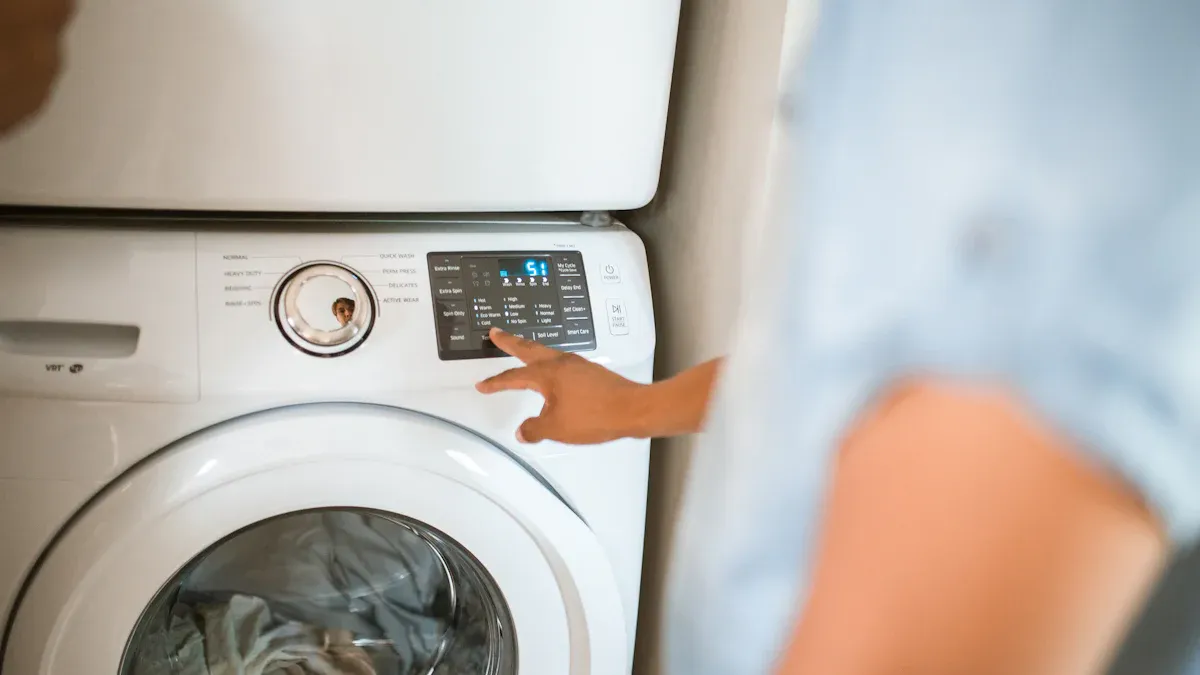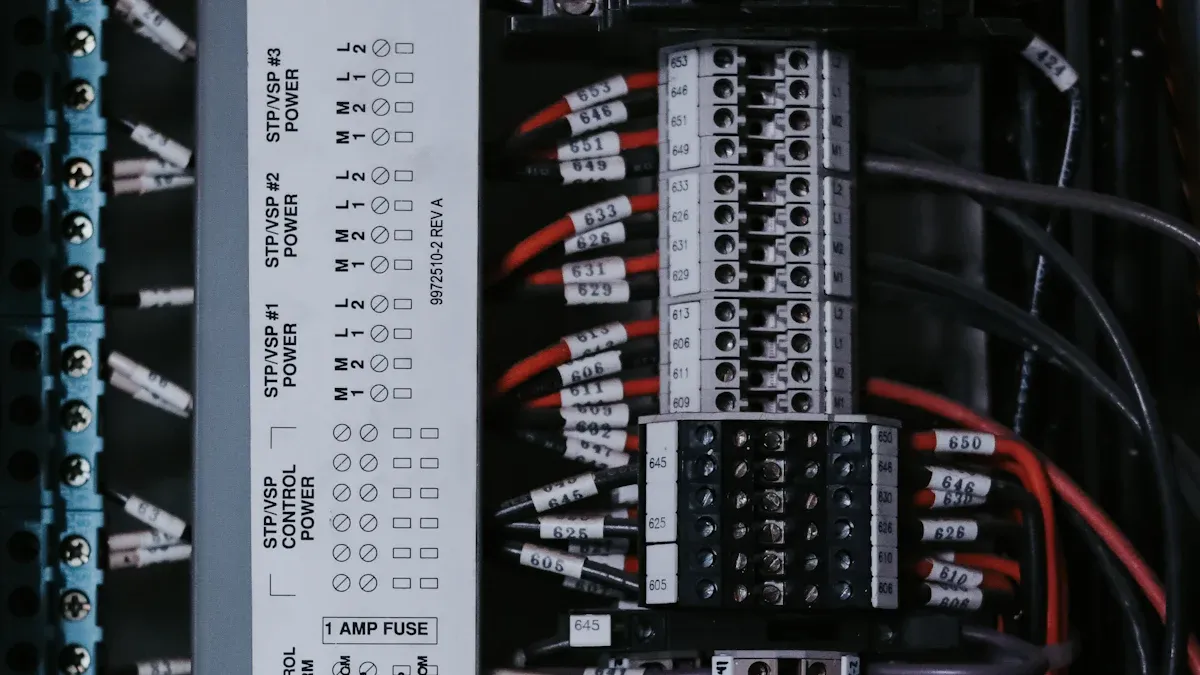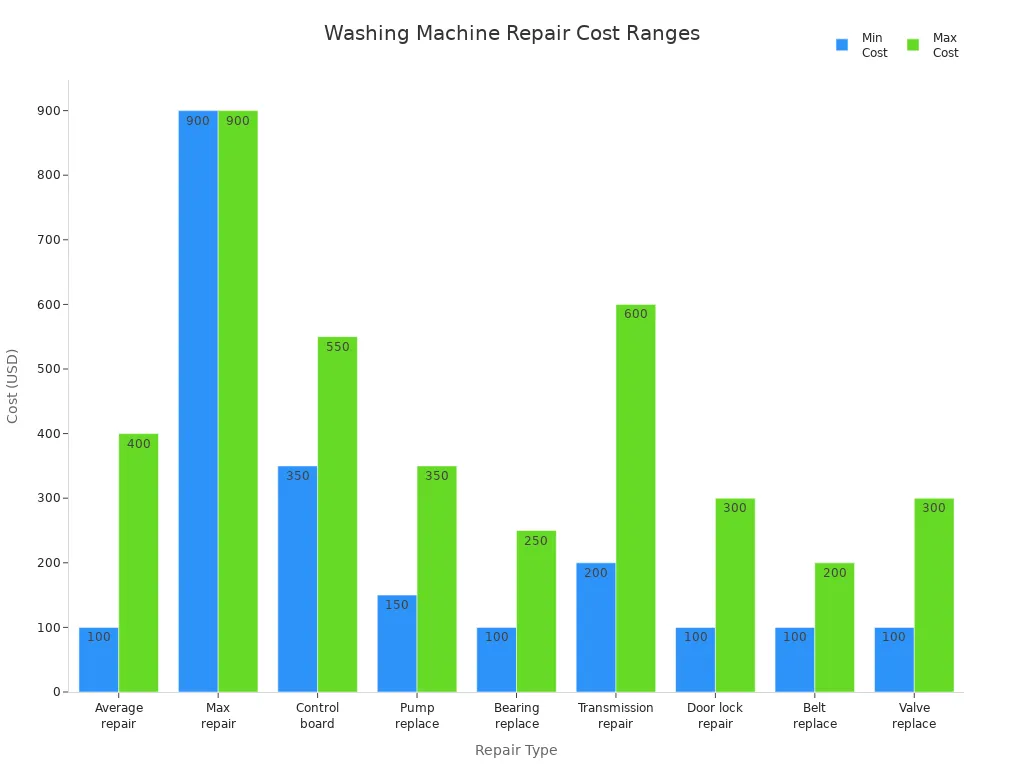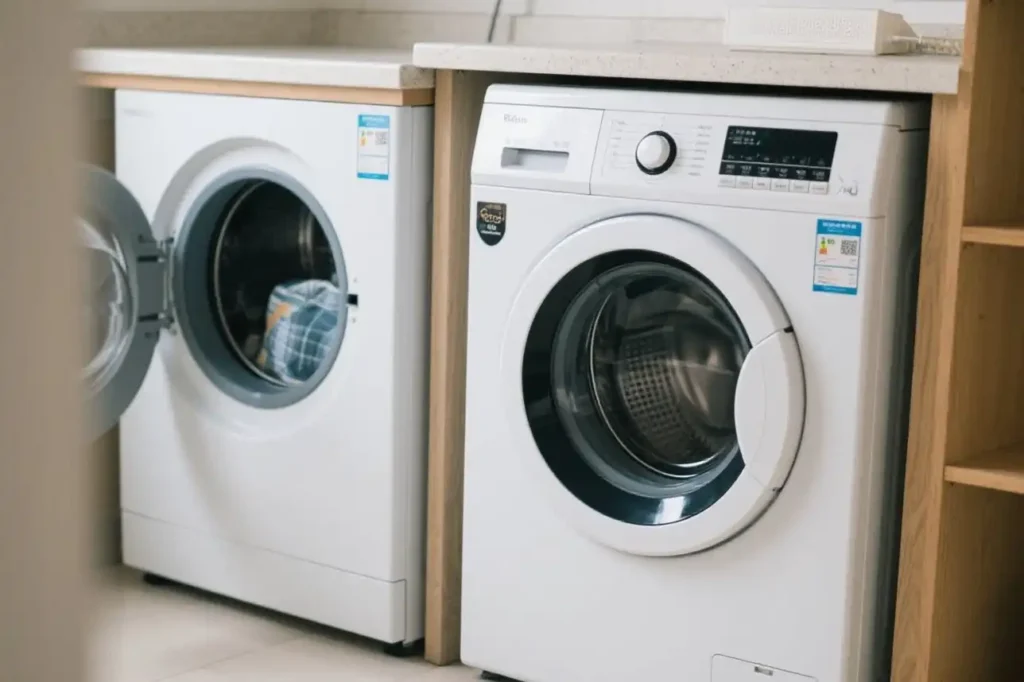A tripped washing machine can make you feel upset and confused. Many people see this because washing machines, especially new ones, can trip breakers. This happens from ground faults or a little electrical leak. The breaker may trip more if other devices use the same circuit. It can also happen if there is a small water leak inside the machine. Some common causes are circuit overload, bad wiring, or old parts. > Always turn off the power before you try to fix anything. You can find safe ways to fix most of these problems at home.
Key Takeaways
- Always unplug your washing machine before you check or fix it. This helps keep you safe from electrical shocks.
- Look for common problems like water leaks, bad wiring, or broken parts. These things can make the breaker trip.
- Test the power outlet to see if it works right. Do not use extension cords. This helps stop electrical problems and overloads.
- Unplug other devices to lower the circuit load. You can also use a circuit just for your washer.
- Call a professional if the breaker trips a lot. Call if you smell burning or see signs of big electrical problems.
Tripped Washing Machine: Common Causes
Electrical Faults
A washing machine can trip the breaker if it has electrical problems. Many times, these problems start inside the washer. Some common electrical issues can make the breaker trip:
- If the motor uses too much power, it can trip the breaker.
- Bad wiring inside the washer can cause a short circuit.
- Wires or motor parts with broken insulation can let electricity out.
- If the motor capacitor or start relay is broken, the motor may not work.
- A circuit breaker that is not right for your washer can trip often.
- Power surges or old house wiring can also make the breaker trip.
Check for these electrical problems if your washer keeps tripping the breaker. If you see burned wires or smell something strange, stop and get help from an expert.
Water Leaks
Water leaks inside the washer can cause big electrical problems. If water touches electrical parts, it can make a short circuit. This is a usual reason for a tripped breaker. Watch for these signs:
- Water near the lid switch can make the washer trip a GFCI outlet.
- Wet wires or parts can cause short circuits.
- Leaking heating elements can let electricity escape.
- A bad drain pump can leak and trip the breaker.
- Any water leak inside the washer can cause electrical trouble.
If you see water where it should not be, dry it and check for broken parts. Change the lid switch if water got to it. Pay attention if the breaker trips during certain wash cycles to find the problem.
Faulty Components
Many washer problems come from broken parts. These parts can cause electrical trouble and trip the breaker. Look out for:
- Heating elements that let electricity escape.
- Drain pumps that short out or leak water on coils.
- Broken wires inside the washer.
- Door locks that get stuck or short-circuit.
- Bad start or stop switches.
- Motors that get too hot or let water in.
You can unplug the drain pump or motor to see if the breaker stops tripping. If it does, you might need to replace that part. Let the washer dry if you think water got inside. Fixing these problems can help you find and solve the issue safely.
Troubleshooting Washing Machine: Step-by-Step

If you have a tripped washing machine, you can follow these troubleshooting steps to find the cause and fix it safely. Always start with safety in mind. Electrical problems can be dangerous, so never skip the basics.
Unplug and Inspect
- Unplug the washing machine from the wall outlet before you begin any troubleshooting. This step keeps you safe from electrical shock.
- Wait a few minutes to let the machine discharge any stored electricity.
- Look around the washer for any obvious signs of damage, such as burn marks, melted plastic, or a strange smell.
- If you see water on the floor or near the machine, dry the area before you continue.
Tip: Never work on a washer that is still plugged in. Even if the washer won’t start, electricity may still be present.
Check Power Cord and Plug
- Examine the power cord and plug for any visible damage, such as cuts, fraying, or burn marks.
- Do not use the washer if you see any damage. Replace the cord or plug with a compatible part before you continue.
- Make sure the cord is not pinched or twisted behind the washer.
- Plug the washer directly into a wall outlet. Avoid using extension cords, as they can cause electrical issues and fire risks.
Note: Damaged cords or plugs are a common source of electrical problems and can lead to a tripped breaker or no power.
Test Power Supply and Outlet
- Plug a small appliance, like a lamp, into the same outlet to check if it works. If the lamp does not turn on, you may have a problem with the outlet or circuit breaker.
- Inspect circuit breaker in your electrical panel. If it has tripped, flip it fully to the OFF position, then back to ON.
- If the breaker trips again right away, stop and look for other issues.
- Use a multimeter to check the voltage at the outlet. Place the probes into the hot, neutral, and ground slots to confirm proper voltage and wiring.
- If you do not know how to use a multimeter, ask someone with experience or call a professional.
Safety Reminder: Always turn off power before using a multimeter for continuity tests. Never touch exposed wires.
Inspect for Moisture or Leaks
- Check behind and under the washer for water stains or puddles.
- Look at hoses and connections for cracks, splits, or signs of wear.
- Remove the washer’s access panel if you feel comfortable. Look inside for hidden leaks, moisture, or residue.
- Use a water leak detector or sensor if you have one. These devices can alert you to leaks early.
- Replace old hoses before they fail to prevent future leaks.
Tip: Moisture inside the washer can cause electrical faults and lead to washer problems like a tripped breaker.
Examine Door Lock and Spin Cycle
- Make sure the door or lid is fully closed and the lock clicks into place.
- If the washer not turning on or stops during the spin cycle, the door lock or sensor switch may be faulty.
- Try running a spin cycle with a small, balanced load. If the breaker trips during this cycle, the motor may be drawing too much current.
- Test the washer on a different circuit if possible. This can help you find out if the problem is with the washer or the circuit breaker.
Note: A malfunctioning door lock or heavy, unbalanced loads can cause the washer to shut down or trip the breaker.
Check Internal Wiring and Components
- Unplug the washer and remove the back or top panel.
- Look for loose wires, bad connections, or signs of corrosion.
- Check for moisture, insect remains, or anything that could cause a short circuit.
- Inspect wiring to the solenoid valve, motor, and heating element for damage.
- Make sure all connections are secure and code-compliant.
- If you see any damaged wiring or components, do not attempt complex repairs yourself. Call a professional for safe solutions.
Alert: Only qualified persons should work on energized electrical parts. If you are not trained, keep a safe distance and do not attempt repairs beyond basic troubleshooting.
Reset Breaker and Machine
- Power off all devices on the affected circuit.
- Locate the tripped breaker in your electric panel.
- Flip the breaker fully to OFF, then back to ON.
- Unplug the washer or turn off its power switch.
- Wait 1 to 5 minutes to let the washer reset.
- Plug the washer back in and try starting a new cycle.
- If the washer won’t start or the breaker trips again, stop troubleshooting and seek professional help.
Tip: Do not reset the breaker repeatedly. If it keeps tripping, you may have serious electrical issues that need expert repair.
By following these troubleshooting steps, you can often find the cause of washer problems like a tripped breaker or no power. Always focus on inspecting wiring and connections, checking power supply, and looking for electrical problems. If you cannot find a simple solution, or if you feel unsure, contact a professional for repair. This approach keeps you safe and helps you avoid bigger electrical issues.
Reduce Circuit Load

Identify Other Devices
You might not know how many things use the same circuit as your washing machine. When many devices run at once, the circuit can get overloaded. This can make the circuit breaker trip. To stop this, check what else is plugged into the same outlet or circuit. Some common things that share circuits with washing machines are:
- Extractor hoods
- Refrigerators and freezers
- Air conditioners
- Vacuum cleaners
- Coffee makers
- Steam irons
- Electric fryers
- Food processors
- Small appliances like kettles, hairdryers, or bread makers
- Multimedia devices such as TVs or computers
- Water heaters and immersion heaters
If your breaker trips a lot, unplug other devices before you wash clothes. This easy step can help you see if too many things are running at once. You might also find a broken device that makes the problem worse.
Tip: Make a list of all devices on the same circuit. This helps you see which ones might cause overloads.
Use Dedicated Circuit
A dedicated circuit gives your washing machine its own power. This helps stop overloads and keeps your washer safe. Electrical codes, like the National Electrical Code (NEC), say big appliances should have their own circuit. Here are some good things about this:
- Stops overloads and keeps breakers or fuses from tripping
- Gives your washer steady and enough power
- Handles the high power washing machines need to start
- Stops problems with other devices on the same circuit
- Lowers the chance of electrical fires
- Follows safety rules and code requirements
Ask a licensed electrician to put in a dedicated circuit if you do not have one. This is a great way to keep your washing machine working without problems.
When to Call a Professional
Persistent Tripping
If your washing machine keeps tripping the breaker, you should not ignore it. Even if the washer works after you reset the breaker, frequent trips are a big warning. This usually means there is a bigger electrical problem. Only a service technician can fix it safely. Here are some signs you need expert help:
- The breaker trips more than once a month, even if you unplug other devices.
- You cannot find the problem after checking cords, outlets, and connections.
- The breaker trips right away after you reset it.
- The lights flicker or get dim when the washer runs.
- The outlets or breaker box feel warm.
Tip: Do not try to fix electrical wiring or parts by yourself. A licensed electrician or service technician has the right tools and knows how to fix these problems.
Signs of Serious Electrical Issues
Some warning signs show your washing machine has a serious electrical problem. These problems can cause fires or damage your home. If you see any of these signs, call a professional right away:
- Burning smells near the washer or electrical panel
- Buzzing sounds or sparks from outlets or controls
- Breakers that feel hot or have burn marks
- GFCI outlets that shut down often
- Breakers that will not reset or trip again right away
- Warm outlets or electrical panels that look discolored
| Sign | Possible Cause | Immediate Action |
|---|---|---|
| Electrical issues | Motor, heating element | Disconnect power, call a service technician |
These problems often mean you have overloaded circuits, short circuits, or ground faults. A service technician or electrician can test for these faults and make safe repairs. You should never try to fix these issues yourself.
If you need professional washing machine repair, you might wonder about the cost. The price depends on what needs fixing and which parts are needed. Here is a chart that shows usual costs for common repairs:

Most repairs cost between $100 and $400. Harder jobs, like control board or transmission repair, can cost up to $900. Electrician labor usually costs $40 to $100 per hour. Appliance repair labor costs $50 to $125 per hour.
Note: If you see any of these warning signs, do not wait. Call a professional service technician or electrician to keep your home and family safe.
You must think about safety before fixing your washing machine. Always unplug the washer before you do anything. Follow each step one at a time. If you see lights flicker or smell burning, stop right away. Buzzing sounds can also mean something is wrong. These signs can show a big electrical problem. If the breaker trips again and again, your circuit may have too much load. Sometimes, it means the washer is broken.
- Look for broken wires and check for water leaks.
- Do not use many big devices on the same circuit.
- Call a licensed electrician if you are not sure or if the problem keeps happening.
Always remember, staying safe is the most important thing.
FAQ
Why does my washing machine trip the breaker only during certain cycles?
Some cycles use more power or activate different parts, like the heater or motor. If a part has a fault, it may only cause problems during those cycles. You can test by running different cycles to see when the breaker trips.
Can I use an extension cord with my washing machine?
Tip: You should not use an extension cord. Extension cords can overheat and cause electrical hazards. Always plug your washing machine directly into a wall outlet for safety.
What should I do if I smell burning near my washer?
Stop using the washer right away. Unplug it and turn off the breaker. A burning smell can mean a serious electrical problem. You need to call a licensed electrician or appliance repair technician for help.
How do I know if my outlet is the problem?
You can plug another device, like a lamp, into the same outlet. If it does not work, the outlet or circuit may have a fault. You should ask an electrician to check the outlet if you are not sure.
Is it safe to reset the breaker more than once?
You should not reset the breaker many times. If it trips again, this means there is a real problem. Repeated resets can cause more damage. Call a professional if the breaker keeps tripping.
The following information may be of interest to you
Washing machine socket: Can you use a regular socket?
Three Phase Distribution Box Functions and Applications Explained
Why a bad circuit breaker can cause low voltage
Can You Connect Multiple Surge Protectors Together Safely
How to Identify and Fix Air Circuit Breaker Malfunctions



